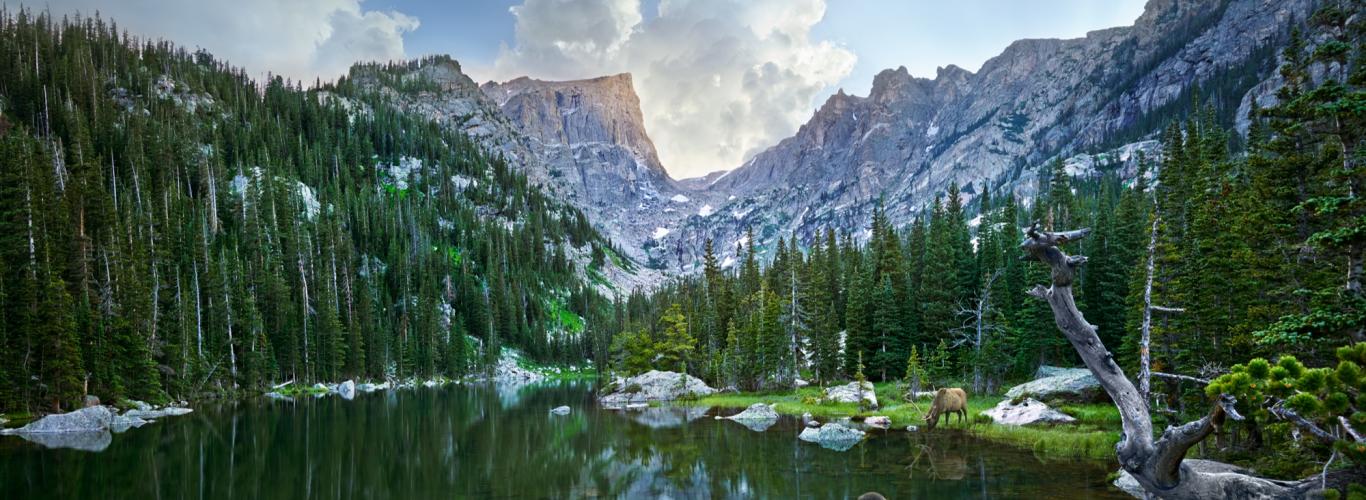As guests set foot in Rocky Mountain National Park this summer, the snow-capped mountain peaks and surrounding pine trees will most likely immediately grab their attention, but what's right beneath their feet is something that should not go unnoticed. The Rocky Mountain Conservancy writes about the numerous wildflowers that can be spotted throughout the Park:
Over the past 100 years, Rocky Mountain National Park has become a location where people from all over the world come to visit, whether it is to see the wildlife, explore the back country, or even drive Trail Ridge Road and take in the vast beauty of the Rocky Mountains. There are many different reasons why Rocky Mountain National Park is incredible, but one smaller piece is the array of wildflowers. The bursts of color on the canvas of the Park make it an even more breathtaking sight to take in. There are hundreds of varying species of wildflowers, so here are some suggestions on a few of the top wildflowers to spot in Rocky Mountain National Park:
1. Colorado Columbine: The Colorado Columbine is one of the most popular flowers in Colorado to try to spot. The Columbine is the state flower, has a variety of complex hues, and symbolizes wild beauty. These flowers are coy, but the search is well worth it. The Colorado Columbine has five pointed outer petals with deep blue/purple hues, and five white inner petals. These flowers can be found in tricky areas such as the alpine tundra, tucked in crevices between boulders around August, yet they can also be found in montane and subalpine climates during June. If you stick around these flowers long enough, you may see hummingbirds, butterflies, and bees who like to snack on their delicious nectar.
2. Elephantella: This pink flower is part of the Snapdragon Family, and is known for its appearance of having two petals that resemble "ears" of an elephant, and an additional growth that looks like the upturned trunk of an elephant. This "trunk" serves as a crucial pollination tool; insects tend to land on the extension and the flower slaps pollen on them with its stamen. These flowers are often found in wet, marshy areas in clusters. They also grow in small patches, often around Crystal Lake, but make sure to look closely at the individual flowers to see if an elephant is peering back at you.
3. Mountain Iris: The Mountain Iris is a gorgeous independent flower that has an appearance all its own. The light blue petals have deep purple veins that trickle down from yellow/white petal bases. This flower, as I have seen it, seems to bloom in and around varying forbs and grasses, and has been spotted in Moraine Park. The Mountain Iris often appears as an explosion of color in moist meadows that often host Golden Banner, Aspen Daisies, and Rocky Mountain Pussytoes.
4. Woodlily: The Woodlily is often an attraction that draws wildflower enthusiasts to the Park. Woodlilies have six red and orange petals that may host purple spots and hues, and often hold two to three blossoms on a single stem. However, the quest to find this flower is becoming ever more difficult. If someone were going to look for this rare treasure, the moister willowed areas in the montane ecosystem would be the place to look for this vibrant pop of color.
5. Fairy Slipper: This particular flower is another very popular blossom that is often sought out. Also known as they Calypso Orchid, this plant gets its name from the shape of the bloom, which looks like a tiny slipper. Gorgeous light pink hues, deep zebra-like striped colors, and bursts of yellow stamen make this flower one of Rocky Mountain's most beautiful. Most recently, this has been spotted on the West side of the Park along the Adams Falls trail.
Although these are some of the showiest flowers in Rocky Mountain National Park, there are many other species that can be found in a variety of areas. The best way to identify flowers is to observe their leaf rotation, petal shape and size, color, stamen, and the environment they grow in. For example, one of the most abundant flowers in RMNP presently is the Golden Banner. This flower belongs to the Legume family, and grows in long-stemmed, yellow flower clusters. You could also identify this flower by the three-parted leaves, also known as being palmately trifoliate. Yet, one of the best resources is a wildflower identification pocket book that provides pictures and detailed descriptions. The Rocky Mountain Conservancy sells the regional best-seller, "Rocky Mountain Wildflowers Pocket Guide" by David Dahms online and in various Conservancy stores.
If you are interested in discovering these, and many other gorgeous wildflowers, the Rocky Mountain Conservancy has a wide variety of field classes where you can do exactly that. Upcoming courses include: Plant & Wildflower Identification with a Naturalist offered June 24, July 8, 15, 24, and August 12. Another informative class entitled Diversity in Wildflowers will be taking place on July 11.
If you are interested in taking any of these classes, or interested in what else the Rocky Mountain Conservancy can offer, please contact the Field Institute at 970-586-3262, or find more information at RMConservancy.org.
By: Mariah Nelson, Olson Fellow at Rocky Mountain Conservancy




